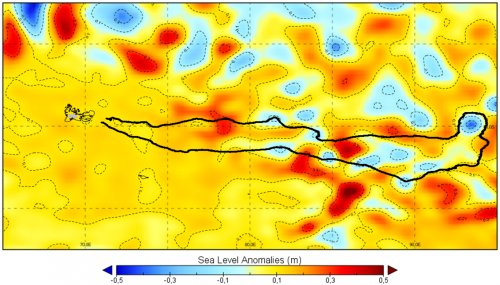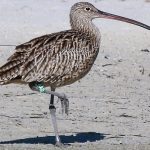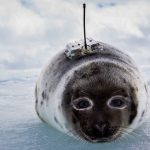← Back
Ocean Data to Better Understand Marine Animals in Their Environment

Argos satellite tracking makes it possible to follow the paths of tagged animals. This tracking data is invaluable, but sometimes it raises more questions than it answers.
Why is the animal making a detour – or even a loop? Does it stay here or there for feeding, or for another reason? If it turns back, could it be due to water temperature?…
Over the longer term, comparing tracking data with ocean data can help biologists understand the behavior of the tracked species, and ultimately contribute to their protection.
Below, Argos tracks of one young male elephant seal followed by IMOS, are overlaid on SST (top) and Chlorophyll-A (bottom) maps.
Ocean data on ArgosWeb
Argos users can benefit from CLS’ 20 years of experience in satellite oceanographic data processing and access state-of-the-art metocean data (such as Sea surface temperature, Phytoplankton, Primary production, Surface current, Surface wind, Clouds, Ice Cover and Sea Level Anomaly) directly via the ArgosWeb interface.
For more information, or to subscribe to the METOC service, contact your user office.
Contact our team to get more info
Some interesting studies combining Argos & ocean data
Please find a selection of articles from the web featuring combined ocean data and animal tracking studies:



![A tagged walrus in water (from [Solovyova et al., 2023]).](https://www.argos-system.org/wp-content/uploads/2024/02/tagged-walrus-in-water-150x150.jpg)
